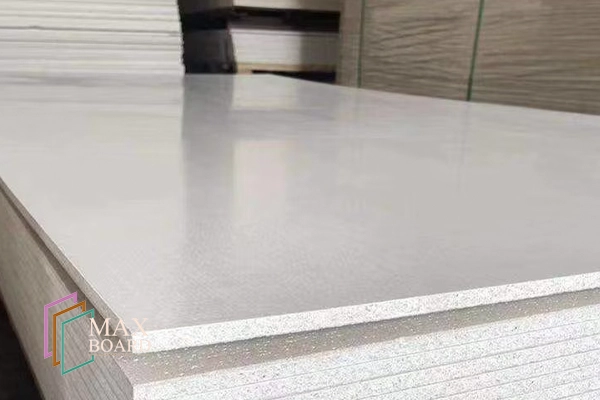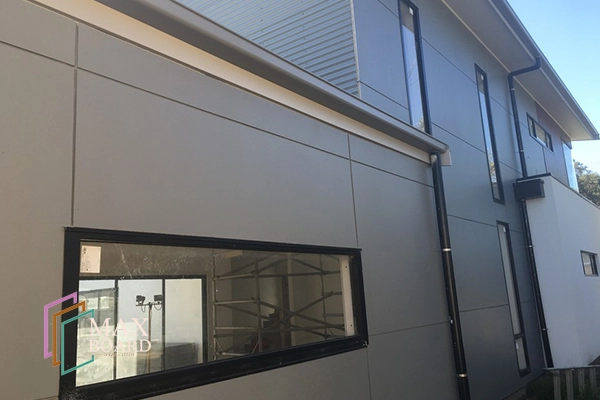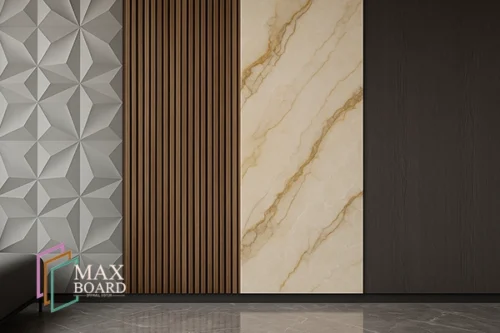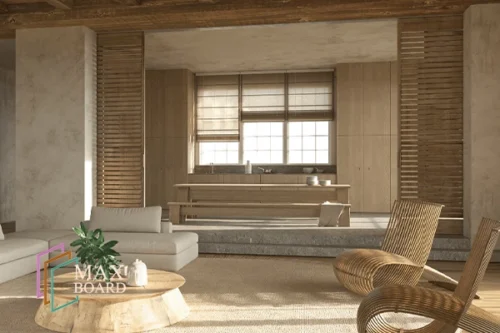LEED wall panels
In today’s construction industry, the variety of LEED wall panels available has revolutionized how sustainable buildings are designed and constructed. Selecting the right type of LEED wall panel is a critical decision that impacts not only durability and fire resistance, but also moisture control, energy performance, and overall green compliance. Whether you’re a contractor, architect, or developer, understanding the role of LEED wall panels—from gypsum to MGO and cement—is essential for making informed, sustainable choices.
For contractors, architects, and developers, integrating LEED-compliant materials isn’t just about reducing carbon footprints—it’s also about:
- 🔹 Attracting eco-conscious investors and tenants
- 🔹 Meeting government sustainability mandates
- 🔹 Increasing long-term asset value
- 🔹 Reducing operational costs through energy efficiency
- 🔹 Gaining a competitive edge in public and private projects
And at the heart of any LEED-oriented strategy lies one critical choice: the materials you use—particularly, the panels that make up the bones of your walls, ceilings, and cladding.
When specifying materials for certification, selecting LEED wall panels early in the design process can set the tone for successful sustainability integration.
How Wall Panels Influence LEED Scoring
Wall panels may seem like just one part of a building’s shell, but in the LEED scoring system, they contribute to multiple credit categories. From thermal insulation to emissions control, the right wall panel can significantly boost a building’s overall sustainability score.
Here’s how wall panels impact LEED certification:
🔸 1. Energy & Atmosphere (EA)
High-performance panels with excellent thermal insulation reduce heating and cooling demands, directly contributing to points under EA credits for energy optimization.
🔸 2. Materials & Resources (MR)
Panels made from recycled, recyclable, or low-impact materials can help projects earn MR credits. Panels like MGO boards, which are low-VOC and long-lasting, fall under this category.
🔸 3. Indoor Environmental Quality (EQ)
Panels that are formaldehyde-free, have low or zero volatile organic compounds (VOCs), and resist mold contribute to healthier indoor environments, supporting EQ credits.
🔸 4. Innovation in Design (ID)
If a wall system incorporates cutting-edge green materials or contributes to regional environmental goals, it can earn additional LEED credits through the innovation pathway.
🔸 5. Regional Priority Credits (RP)
Certain panel types that solve local environmental challenges (like humidity, wildfire resistance, or heat reflection) may qualify for extra credits in that region.
By carefully selecting LEED wall panels with certified environmental performance, project teams can maximize points without increasing budget dramatically—especially when those panels contribute across multiple categories simultaneously.
Green Certifications: LEED vs BREEAM vs WELL
While LEED is the most recognized green certification globally, it’s not the only one. Professionals involved in sustainable construction often encounter a few major alternatives: BREEAM and WELL Building Standard. Each system has a different focus, scoring method, and regional influence.
Here’s a quick comparison of the three:
| Certification | Origin & Scope | Primary Focus | Typical Use Cases |
|---|---|---|---|
| LEED | U.S. / Global | Energy, materials, water use, indoor quality | Commercial, residential, and institutional projects worldwide |
| BREEAM | UK / Europe | Energy, innovation, land use, transport | European projects, especially UK public buildings |
| WELL | U.S. / Global | Human health, comfort, air, water, light | Health-focused buildings: offices, hospitals, schools |
🔸 LEED
A holistic system that balances environmental performance with economic feasibility. LEED puts significant weight on building materials—especially wall panels and their composition.
🔸 BREEAM
Places a higher emphasis on land use efficiency, lifecycle impacts, and innovation. While still concerned with materials, BREEAM is often more regionally adapted.
🔸 WELL
Focuses entirely on the occupant’s well-being. While it doesn’t prioritize materials like LEED does, panels that are VOC-free, mold-resistant, and noise-insulating help achieve WELL credits.
Understanding these systems helps project developers align their material choices—especially construction panels—with the appropriate certification path. Choosing a product like an MGO Board that meets multiple criteria across different standards can maximize compliance across various markets.

Characteristics of LEED-Compliant Wall Panels
To contribute to LEED certification, LEED wall panels must meet strict technical and sustainability benchmarks. Panels that offer low VOCs, thermal insulation, and durability not only benefit building performance but also help satisfy LEED credit requirements.
🔸 1. Low or Zero VOC Emissions
Panels should release minimal volatile organic compounds (VOCs) to maintain indoor air quality—especially important for credits under Indoor Environmental Quality (EQ).
✅ Materials like magnesium oxide (MGO) are naturally VOC-free.
🔸 2. Fire Resistance
LEED doesn’t grant direct points for fire rating, but using non-combustible, fire-resistant materials supports building safety and may contribute to regional requirements or innovation credits.
✅ Fire-Rated Gypsum Boards and MGO Boards excel here.
🔸 3. Moisture and Mold Resistance
Water-resistant panels are crucial in humid climates and wet zones. Mold-resistant properties also support better indoor environments and longer product life.
✅ MR H3 Gypsum Board is a great example.
🔸 4. Thermal Insulation Performance
Better insulation reduces energy consumption and supports Energy & Atmosphere (EA) credits. A panel’s thermal conductivity (λ-value) must be low to qualify.
🔸 5. Recycled or Eco-Friendly Composition
Panels made from natural minerals, recycled materials, or sustainable resources (like straw or wood waste) may qualify under Materials & Resources (MR) credits.
🔸 6. Durability and Lifecycle Efficiency
Long-lasting panels reduce the need for frequent replacement, contributing to overall environmental responsibility.
When choosing wall panels for a LEED project, it’s essential to evaluate these criteria alongside certifications like ASTM, EN, or ISO to ensure global compliance.
And as we’ll soon see—MGO Boards check nearly every one of these boxes.
Why MGO Boards Are Ideal for Sustainable Certification
When it comes to choosing the best material for LEED wall panels, Magnesium Oxide (MGO) Boards consistently outperform traditional options. Their fire resistance, zero VOC emissions, and long-term durability make them an ideal choice for sustainable construction panels used in certified green building projects.
One of the major reasons architects and project managers trust Maxboard is the proven MGO board LEED compliance. Every panel is manufactured with sustainability in mind, providing documentation and test results that directly contribute to LEED Material & Resource and Indoor Environmental Quality credits.
Here’s why MGO Boards are considered one of the most LEED-friendly wall panels on the market:
🔸 1. Inherent Fire Resistance
MGO Boards are non-combustible by nature and achieve the highest fire safety standards, including ASTM E136 and EN 13501-1 (A1 rating). This adds valuable safety without relying on chemical additives.
🔸 2. Zero VOC Emissions
Unlike synthetic boards, MGO panels emit no volatile organic compounds, ensuring safe indoor air quality and earning credits under Indoor Environmental Quality (EQ).
🔸 3. Moisture and Mold Resistance
Due to their mineral composition, MGO Boards resist water absorption, mold growth, and warping. This makes them suitable for bathrooms, kitchens, and tropical climates—aligning with durability and health-related LEED goals.
🔸 4. Excellent Thermal and Acoustic Performance
Their structure allows for low thermal conductivity and superior sound dampening—supporting energy conservation and occupant comfort.
🔸 5. Long Lifecycle and Minimal Maintenance
Durable under extreme environmental stress, MGO Boards last for decades without degradation. Their long lifespan reduces environmental burden, making them ideal under Materials & Resources (MR) credits.
🔸 6. Eco-Friendly Composition
Made from abundant natural materials like magnesium oxide, perlite, and wood fibers, MGO Boards avoid toxic binders or additives. Many manufacturers (like Maxboard) ensure minimal environmental impact during production.
In short, MGO Boards fulfill nearly every requirement expected from a green, future-ready wall panel. Whether you’re working on a residential LEED Gold project or a commercial building seeking BREEAM Excellent certification, MGO offers unmatched flexibility and compliance.
Case Studies: Green Projects That Used Certified Panels
To truly understand the impact of LEED wall panels in real-world applications, let’s explore several successful green construction projects that leveraged certified, eco-friendly panels—including MGO Boards—to achieve their sustainability goals.
Case Study 1: LEED Gold Office Tower – Singapore
In the heart of Singapore’s central business district, a 35-story office tower achieved LEED Gold certification using a combination of high-performance materials. Interior and partition walls were constructed using MGO panels, selected for their:
- Non-combustible rating (ASTM E136)
- Zero VOC emissions
- Excellent moisture resistance in a tropical climate
The building’s superior indoor air quality and reduced HVAC loads were directly attributed to the panel selection.
Case Study 2: Green School Complex – California, USA
A public school district aiming for WELL and LEED dual certification opted for low-VOC, mold-resistant boards in its classrooms and gyms. MGO boards were chosen over gypsum due to higher durability and better soundproofing.
- Improved classroom acoustics (acoustic rating over 50 STC)
- Zero complaints of indoor humidity or wall degradation over 5 years
- Qualifying points under LEED EQ and MR categories
Case Study 3: Eco-Hotel Chain – Northern Europe
A Scandinavian hotel group implemented LEED and BREEAM standards in its new locations. MGO panels played a central role due to:
- Lightweight yet durable structure
- Easy installation reducing construction waste
- Compatibility with timber framing for carbon neutrality
The hotel earned BREEAM Excellent and LEED Silver, partly thanks to the use of mineral-based board products.
These examples clearly show that the choice of panel material directly affects green certification potential. MGO Boards, with their balanced performance across thermal, acoustic, and environmental metrics, are becoming the preferred choice for professionals aiming for green certifications.
Their engineering team reported that switching to LEED wall panels helped streamline documentation and reduced installation time by over 20%.
How to Specify LEED Wall Panels in Your Project
Integrating LEED-compliant wall panels into a building project isn’t just about picking the greenest-sounding option on a product sheet. It requires accurate specification, documentation, and coordination with suppliers to ensure that the selected material contributes effectively to certification goals.
Here’s a step-by-step guide to help architects, specifiers, and project managers choose the right wall panels:
🔸 1. Define Project Certification Goals
Start by confirming the LEED level you’re aiming for (Certified, Silver, Gold, or Platinum) and which credit categories are most important to your project (e.g., Indoor Air Quality, Energy Optimization, Regional Materials).
🔸 2. Consult Manufacturer Certifications
Work with panel manufacturers who provide:
- ASTM, EN, or ISO standards
- VOC emission reports
- Environmental Product Declarations (EPDs)
- Technical Data Sheets (TDS)
✅ Brands like Maxboard offer downloadable documentation to simplify this step.
🔸 3. Match Panels to Credit Categories
Verify that the selected panels:
- Support EA credits with insulation performance
- Comply with EQ requirements (low-emission materials)
- Assist in MR credits (low-impact, recyclable)
If you’re using MGO Boards, you’re already checking multiple boxes with one product.
🔸 4. Coordinate with Contractors
Ensure your general contractor and installers are aware of the panel selection rationale and that no substitutes are made without prior evaluation. Installation practices should also preserve the environmental performance of the product (e.g., using non-toxic adhesives or sealants).
🔸 5. Document Everything for LEED Review
Keep a complete record of product certifications, purchase receipts, and usage percentages. LEED certification depends on meticulous documentation—especially in MR and EQ categories.
By taking these steps, project teams can confidently integrate high-performance panels like MGO Boards into their buildings while maximizing LEED point acquisition—without overextending the budget or schedule.

Why MGO Boards Deserve a Place in Every LEED-Certified Project
As the global construction industry shifts toward net-zero buildings, health-centered interiors, and low-carbon materials, the role of construction panels has evolved far beyond basic structural utility. Today, your wall panels can determine whether a project earns—or misses—critical sustainability certifications like LEED, BREEAM, or WELL.
In this landscape, Magnesium Oxide Boards (MGO Boards) rise above the competition as one of the most complete, versatile, and eco-aligned materials available.
Let’s explore, in full technical and practical depth, why MGO Boards should be your go-to panel for green buildings:
🔸 1. Naturally Non-Combustible & Fire-Resistant
MGO Boards are A1 fire-rated under EN 13501 and pass ASTM E136 without additives. Unlike gypsum boards that require chemical fireproofing, MGO’s mineral structure is inherently safe.
✅ This supports both fire code compliance and potential Innovation in Design (ID) credits under LEED.
🔸 2. VOC-Free for Cleaner Indoor Air
Unlike synthetic boards or laminated products, MGO Boards emit zero VOCs (volatile organic compounds). No formaldehyde. No phthalates. No urea resins.
They significantly contribute to:
- LEED EQ Credit: Low-Emitting Materials
- WELL Certification Feature 01: Air Quality Standards
- A healthier indoor environment for occupants
🔸 3. Mold-Proof, Moisture-Resistant, Termite-Resistant
MGO Boards don’t warp, swell, or decay—even in high-humidity environments, making them ideal for:
- Coastal buildings
- Wet interiors (bathrooms, kitchens)
- Tropical or subtropical climates
Plus, resistance to fungi, mildew, and insects means less long-term maintenance, which aligns with MR credits under LEED for durability and resource efficiency.
🔸 4. Energy-Efficient & Thermally Insulative
MGO Boards have low thermal conductivity, helping to stabilize indoor temperatures and reduce HVAC loads. Combined with smart insulation systems, this can contribute to:
- LEED EA Credit: Optimize Energy Performance
- Lower operational costs
- Smaller environmental footprint over time
🔸 5. Long Service Life = Fewer Replacements
LEED rewards materials that last longer, perform better, and require less frequent replacement. MGO’s average lifespan under normal conditions is 30–50 years—double or even triple that of some standard gypsum boards.
✅ This reduces lifecycle impact and conserves resources, contributing to MR Credit: Building Life-Cycle Impact Reduction.
🔸 6. Lightweight & Easy to Install
Compared to cement boards, MGO Boards offer superior workability:
- Can be scored and snapped like drywall
- Accepts screws, nails, and adhesives
- Compatible with steel and timber frames
- Can be painted, tiled, or finished with decorative surfaces
Faster installation = reduced labor costs + lower waste + faster project timelines.
🔸 7. Recyclable and Eco-Sourced
Many leading MGO manufacturers—including Maxboard—use:
- Locally sourced minerals (magnesium oxide, perlite)
- FSC-certified wood fibers
- Energy-efficient kilns with low emissions
At the end of their service life, MGO Boards can often be recycled or repurposed, minimizing landfill contribution and supporting LEED MR Credits for Construction Waste Management.
🔸 8. Versatility Across LEED Projects
Whether you’re building a:
- LEED Platinum hospital
- Net-zero residential villa
- Passive-certified school or office
- BREEAM-certified commercial complex
…MGO Boards adapt to the application. Their multifunctional performance allows them to replace multiple layers of material (e.g., fire layer + moisture barrier + acoustic panel), simplifying wall systems and reducing embodied carbon.
🔸 9. Proven Track Record in Global Green Projects
From North America to the Middle East, from Europe to Southeast Asia, MGO Boards are being actively used in LEED- and WELL-certified buildings. Their global acceptance and standards compliance make them a safe, future-proof investment for both small- and large-scale developers.
🔸 10. Ready Documentation for Certification
One of the biggest obstacles in achieving certification is lack of proper material documentation.
With Maxboard’s MGO Panels, you get:
- CE Marking & EN 13501 Certification
- ASTM E84 & E136 Reports
- VOC Emissions Certificates
- Environmental Product Declarations (EPDs)
- Technical Data Sheets (TDS)
All of which are readily available for your LEED submission package.
In Summary:
MGO Boards offer the rare combination of fire resistance, moisture protection, health safety, and environmental integrity—all in one panel.
They reduce risk. Improve performance. And unlock crucial LEED points.
That’s why more and more sustainable architects and green developers are making the switch to MGO.For any project targeting LEED points, LEED wall panels like Maxboard MGO offer an unmatched combination of performance, health safety, and documentation ease.
Ready to Build Green? Choose Maxboard MGO Panels
Whether you’re aiming for LEED Gold or just improving indoor air quality, selecting the right LEED wall panels is the foundation of sustainable design. Maxboard offers one of the most advanced sustainable construction panels in the industry, and thanks to its certified MGO board LEED compliance, it’s trusted by green builders around the world.
With their fire resistance, zero VOC emissions, moisture durability, and eco-friendly manufacturing, MGO Boards outperform traditional gypsum, wood, and cement panels in both technical benchmarks and sustainability metrics.
Why Architects, Builders, and Developers Choose Maxboard:
- Backed by international fire and safety certifications
- Compliant with LEED, BREEAM, WELL, and local green codes
- Supplied with full documentation for certification ease
- Trusted in residential, commercial, healthcare, and educational builds
- Supported by a professional sales and technical team across MENA and Europe
📩 Looking to specify Maxboard in your next project?
Fill out our quote request form or reach out to our team for:
- Sample boards
- Technical sheets
- Pricing and delivery options
- LEED/BREEAM assistance
Maxboard — Building the Future, One Green Panel at a Time.



